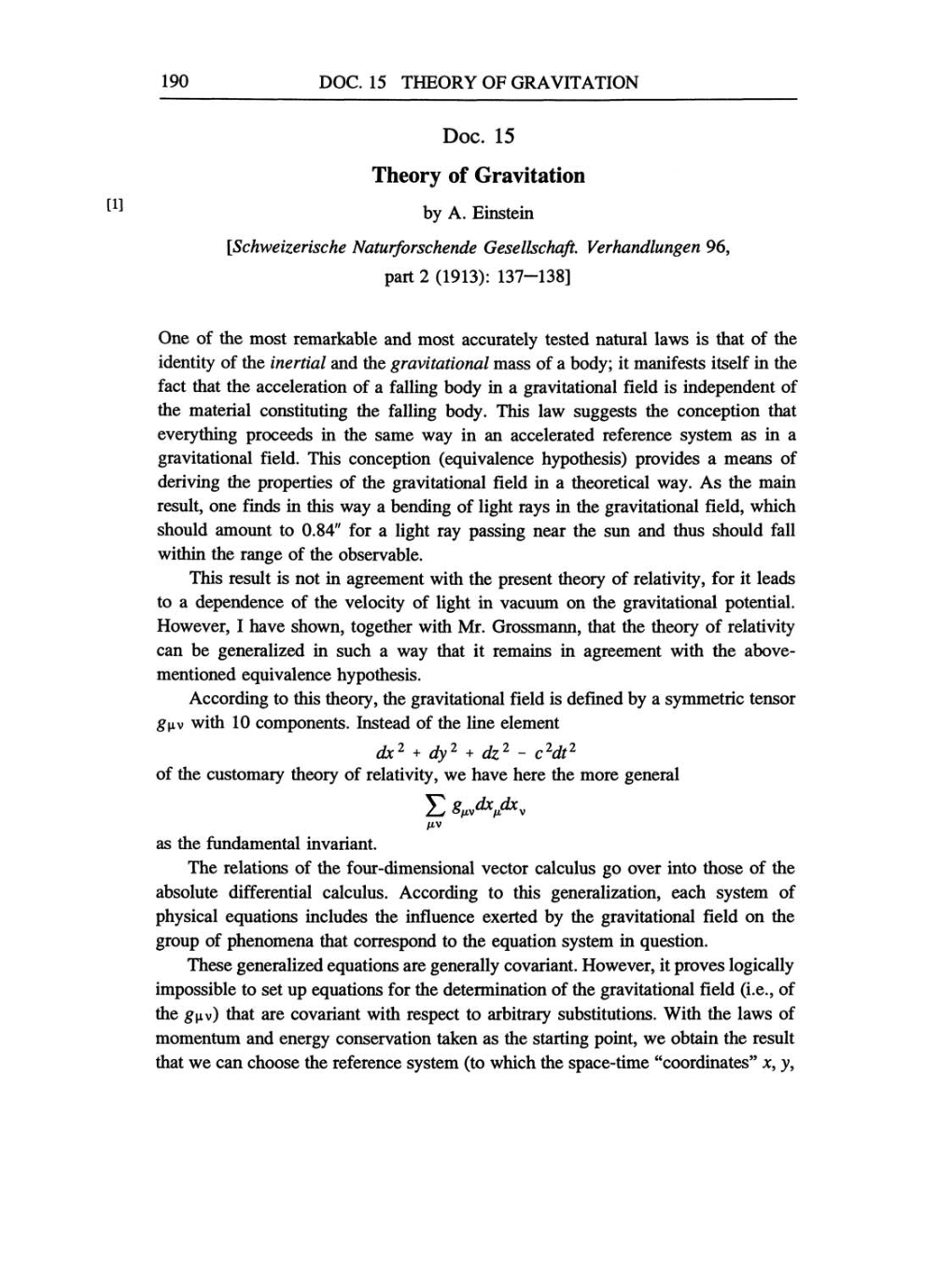190 DOC.
15
THEORY OF GRAVITATION
Doc.
15
Theory
of Gravitation
by
A.
Einstein
[Schweizerische
Naturforschende Gesellschaft. Verhandlungen
96,
part
2
(1913):
137-138]
[1]
One of the
most
remarkable and
most
accurately
tested natural laws is that of the
identity
of
the
inertial
and the
gravitational
mass
of
a
body;
it
manifests itself in the
fact that the acceleration of
a falling body
in
a gravitational
field is
independent
of
the
material
constituting
the
falling body.
This law
suggests
the
conception
that
everything proceeds
in the
same
way
in
an
accelerated
reference
system as
in
a
gravitational
field. This
conception (equivalence hypothesis) provides
a means
of
deriving
the
properties
of the
gravitational
field in
a
theoretical
way.
As the main
result,
one
finds in this
way
a bending
of
light
rays
in the
gravitational
field,
which
should
amount to 0.84"
for
a
light ray passing
near
the
sun
and thus should fall
within the
range
of
the observable.
This result is
not
in
agreement
with the
present theory
of
relativity,
for it leads
to
a
dependence
of
the
velocity
of
light
in
vacuum
on
the
gravitational potential.
However,
I
have
shown, together
with Mr.
Grossmann,
that the
theory
of
relativity
can
be
generalized
in such
a
way
that
it
remains in
agreement
with the
above–
mentioned
equivalence
hypothesis.
According
to
this
theory,
the
gravitational
field
is
defined
by
a
symmetric
tensor
guv
with
10
components.
Instead of the line element
dx2
+ dy2
+
dz2
-
c2dt2
of the
customary theory
of
relativity,
we
have here the
more
general
E
as
the fundamental invariant.
The relations of the four-dimensional
vector
calculus
go over
into those of the
absolute differential calculus.
According
to
this
generalization,
each
system
of
physical equations
includes the influence exerted
by
the
gravitational
field
on
the
group
of
phenomena
that
correspond
to the
equation system
in
question.
These
generalized equations are generally
covariant.
However,
it
proves logically
impossible
to set
up equations
for the determination of the
gravitational
field
(i.e.,
of
the
guv)
that
are
covariant with
respect
to
arbitrary
substitutions. With the laws
of
momentum
and
energy
conservation taken
as
the
starting point,
we
obtain
the
result
that
we can
choose
the reference
system
(to
which the
space-time
"coordinates"
x, y,
